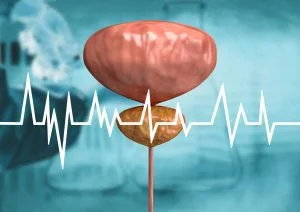Simple Prostatectomy
What is Prostatectomy?
A prostatectomy is a surgical procedure for the partial or complete removal of the prostate. These types of procedures are required in the cases of Prostate Cancer and Benign Prostatic Hyperplasia (BPH).
Your prostate is a small walnut-shaped gland that’s part of the male reproductive system. It surrounds the urethra, which is the tube through which semen (ejaculate) and urine (pee) flow out of your body. It contributes extra fluid to your ejaculation. Fluid (semen) from your prostate enters the urethra during ejaculation, and muscles surrounding the urethra squeeze (contract) to push semen out of the urethra when you orgasm.
Prostatectomies are a very common surgery for prostate cancer that hasn’t spread outside your prostate. Healthcare providers perform about 90,000 prostatectomies each year in the United States.
Prostate cancer is the second most common cancer that affects men and people AMAB, behind skin cancer. It affects about 1 in 8 men, at an average age of 66.
Types of Prostatectomy
The prostate gland is located within the male pelvis area near the urinary bladder. It also encases the urethra. A radical prostatectomy is the removal of the entire prostate gland. There are multiple different methods of performing a radical prostatectomy:
- Open Radical Prostatectomy – In this procedure, the surgeon will make an incision in the lower abdomen. This allows the doctor’s full vision for the removal of the prostate.
- Laparoscopic Radical Prostatectomy – During a laparoscopic radical prostatectomy, multiple small incisions are made and a laparoscope is placed in the incisions allowing for the vision for the doctor. Small, long-handled tools are placed through the incisions in order to remove the prostate gland.
- Robot-Assisted Laparoscopic Radical Prostatectomy – Similar to the laparoscopic radical prostatectomy, however instead of the doctor holding the tools, they use a robotic machine from a console that assumes a full range of motion from the surgeon. At Z Urology we use the DaVinci Robotic Surgery System for or Robot-Assisted Laparoscopic Prostatectomy (RALP).
Symptoms of Prostate Cancer
In its early stages, prostate cancer may not cause symptoms. More advanced prostate cancer may have the following symptoms:
- Trouble urinating
- Decreased force in the stream of urine
- Blood in the urine
- Blood in the semen
- General pain in the lower back, hips or thighs
- Discomfort in the pelvic area
- Bone pain
- Erectile dysfunction
What are the Risks or Complications of a Prostatectomy?
All surgical procedures have risks. Some risks of a prostatectomy include:
- Anesthesia risks.
- Healing problems.
- Possible need for a blood transfusion.
- Infection.
- Mass of clotted blood (hematoma).
- Blood clots.
- Fluid buildup at the surgical site (seroma).
- Incontinence.
- Erectile dysfunction.
- Penile atrophy.
- Dry orgasm.
How Does Life Change After Prostate Removal?
Many people will have temporary urinary incontinence after a prostatectomy. Incontinence rates are higher after radical prostatectomy than for simple prostatectomy. Types of incontinence may include:
- Urge incontinence. Urge incontinence is a sudden, uncontrollable need to pee.
- Stress incontinence. Stress incontinence is involuntarily peeing during physical exertion, such as exercising, coughing, or sneezing.
- Orgasmic incontinence (climacturia). Orgasmic incontinence is leaking pee when you’re sexually excited. You may also ejaculate pee when you orgasm.
Many people have excellent control of their urine stream once a provider removes their catheter, but some may leak varying amounts for several weeks. Most have good urinary control around six to 12 weeks after the procedure.
Many can resume having sex once they’ve healed after a prostatectomy, which may take four to six weeks.
Can You Have an Erection After a Prostatectomy?
Erection issues aren’t as common after a simple prostatectomy for BPH, but almost all people have erectile dysfunction after a radical prostatectomy for prostate cancer. Erectile dysfunction occurs because the procedure bruises or otherwise damages the nerves that allow for erections, which are very close to the prostate gland. Sometimes your healthcare provider removes part or all of a nerve to treat prostate cancer.
Most people won’t experience erections for several months after a prostatectomy, even if your provider can preserve all of your nerves. Erection function should gradually improve around six months after surgery. However, it may take two full years after surgery to recover the same erection hardness and sexual function.
Even if you can’t get an erection after surgery, you can still experience an orgasm and have a normal sensation. However, little or no ejaculation may be present. It’s important to begin sexual activity after you regain control of your urine stream to maintain blood flow to your penis. Maintaining blood flow helps prevent fibrosis. Fibrosis is the development of thick scar tissue after an injury. It can make it more challenging to achieve harder erections.
Therapies that help restore erections include:
Call your doctor about prostate cancer if you experience
- Trouble urinating or painful urination
- Chronic pain in your lower back, pelvis, upper thighbones, or other bones
- Unexplained weight loss
- Swelling in your legs
- Weakness in your legs or difficulty walking


